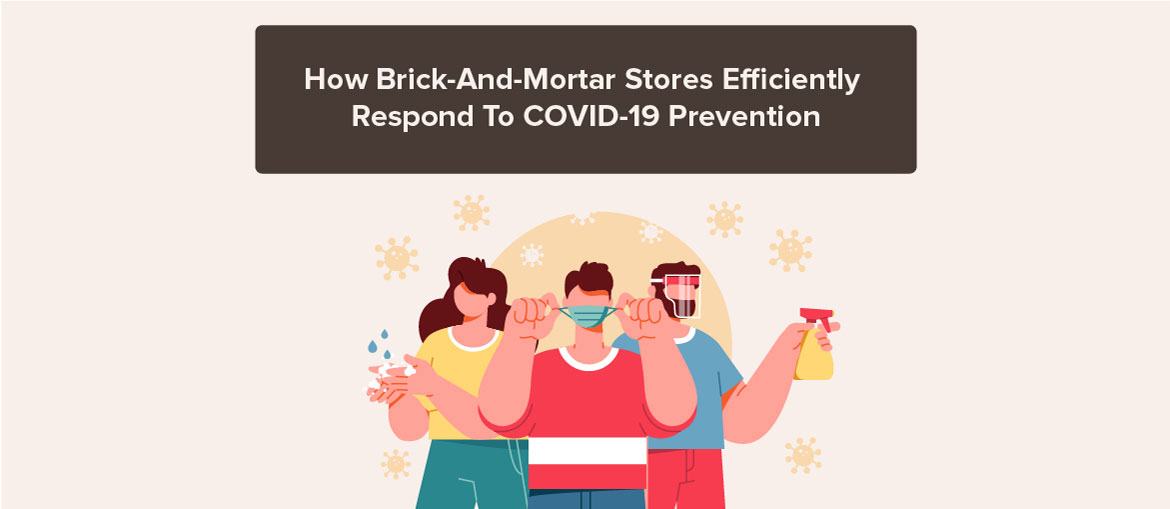Table of contents
2020 is already over but its negative impacts on the retail industry are still lingering on. Particularly for brick-and-mortar retailers, according to the latest update from Forbes on the last day of 2020, the number of store closures in 2020 is 15,542 stores, mainly due to COVID-19. As the pandemic shows no sign of coming to an end any time soon, it’s prime time for brick-and-mortar stores to prepare themselves to avoid being vulnerable facing COVID-19. And we’re here to help! In today’s article, we’ll give you 5 ways how brick-and-mortar stores can efficiently respond to COVID-19 prevention and grow simultaneously.
Ensure physical distancing
Social distancing or physical distancing is one of the most crucial protective measures of COVID-19 prevention. Even though it’s necessary and a-must for brick-and-mortar retail to commit to strict physical distancing rules, those rules are a huge challenge for offline stores. Here are some tips for brick-and-mortar stores to maintain proper physical distancing while still fruitfully operating their businesses.

Maintain an appropriate in-store customer number
- Restrict the number of customers in the stores at once. Ideally, the total number of people in your store including employees and buyers, at any one time, should not be more than 1 person for every 2 square meters.
- Maintain the distance of at least 1.5 meters between every 2 people. Each person should be aware of this and practice it on their own.
- Assign a staff member at the store entrance to count the customers walking in and leaving the store to ensure a reasonable in-store density. You can also consider adopting the ‘one in one out’ policy when necessary.
- Utilize one-way aisles to make it more likely that everyone is complying with these strict rules when needed.
- Consider restricting the number of available car parks, which aligns with the customer limit in your store if possible. However, bear in mind that you still need to keep the disability parking spaces accessible always.
Make space for queuing
To maintain physical distancing for proper COVID-19 prevention, it’s necessary to ensure that your queuing points have enough spaced floor markings. Queuing can happen at checkouts and the entrance to the store; hence, you should pay attention to all of those places. For larger stores, it’s more ideal when queuing stations are outside the store and clearly identified.
Improve security
Some appropriate security measures could be applied in order to ensure compliance with physical distancing obligations. Both large and small brick-and-mortar retail stores can consider these measures, depending on the layout of their store.
Additionally, store assistants also play a crucial and irreplaceable role in monitoring the behavior of customers. They should also be in charge of ensuring the measures put in place to maintain proper physical distancing.
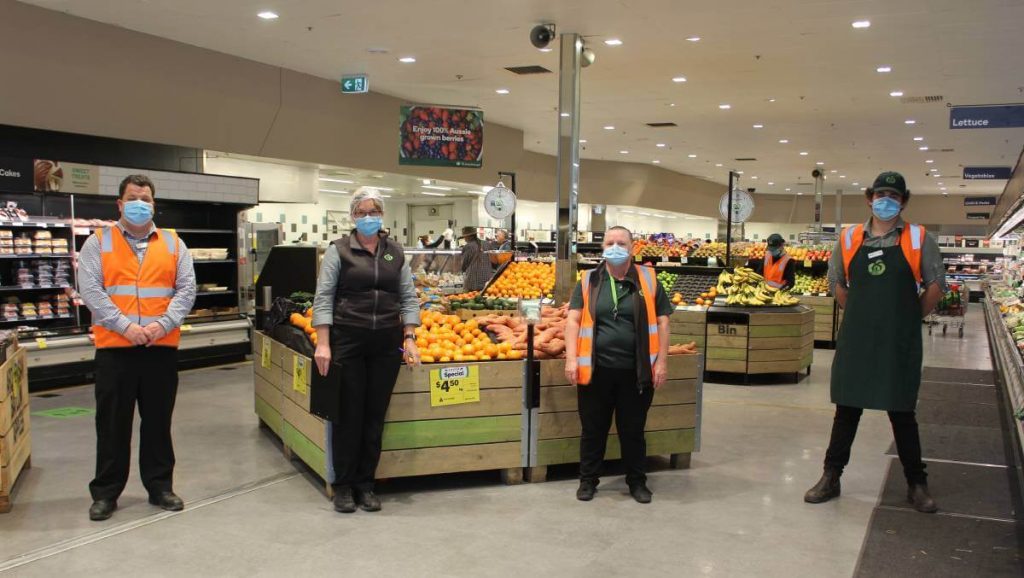
Ramp up your hygiene policies
Make necessary in-store adjustments
A core measure for COVID-19 prevention is sterilization. As brick-and-mortar retail stores, you should have your staff members clean every surface and object regularly with disinfectant. Furthermore, it’s necessary to provide proper training and informational materials to all staff members and suppliers. With that being so, they are up-to-date with standard personal preventive measures. You should also consider other measures to minimize the contamination in your stores. For example, there are some small actions for COVID-19 prevention that you can apply right now: close water fountains, remove sampling and demo areas where contact and human interaction can occur, etc.
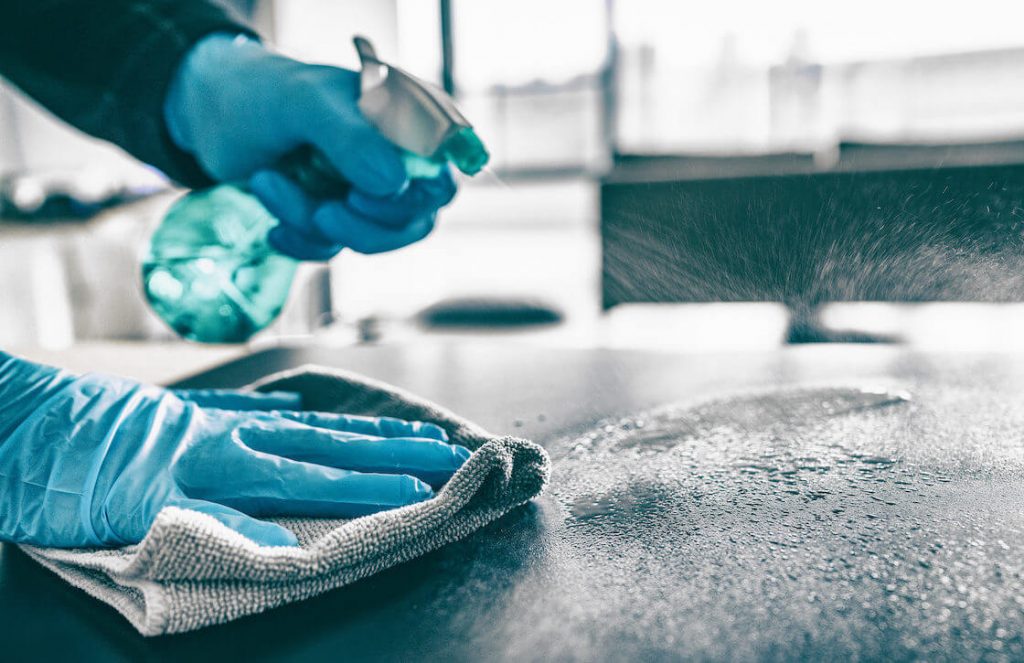
Encourage frequent handwashing
It’s recommended not to touch your face with your hands as it increases the risk of infections. According to research, people touch their faces about 23 times on average per hour. That facilitates many different bacteria and viruses to cause respiratory infections, including COVID-19 infections. However, not touching your face is not enough. It’s just the tip of the iceberg.
As the owners and operators of brick-and-mortar retail stores, you should actively distribute information on effective handwashing procedures to your staff and customers. There are many posters created by health authorities that you can print and put up in your stores. Additionally, it’s also useful to offer hand sanitizer wipes or dispensers in staff restrooms, at check-out counters, at the entrance and exit, and around your store. Thus, you need to have a plan to make sure you stock good amounts of soap and gel.
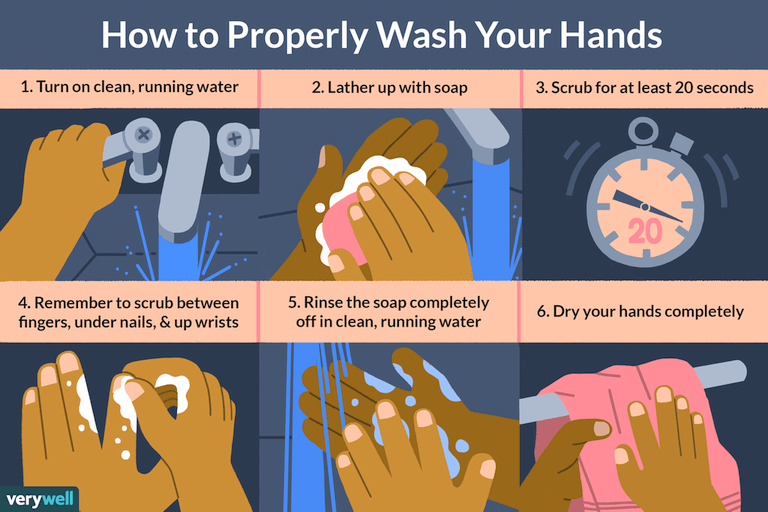
Even better, many brick-and-mortar retailers have also been providing their employees with masks and gloves. Some retailers are also offering customers single-use masks. Such seemingly small actions contribute to not only COVID-19 prevention but also the peace of mind of customers while shopping. With that being so, people can feel safe and have more courage to shop in your physical store.
Be mobile and creative
While many retail closures in recent months are unavoidable, it would be a mistake for brick-and-mortar stores to retreat completely. In many cases, removing a physical store makes the retailer out of sight and out of mind for customers. With that being so, even when retailers decide to shift to e-commerce, it actually leads to a loss in online sales rather than a gain. The key is to be mobile and creative with your offline retail business.
To respond actively to COVID-19 prevention, there have been some innovative brick-and-mortar retail stores finding creative ways to stay close to their customers. The noticeable emergence and success of pop-up stores and vending trucks support this creativity. Furthermore, this trend is likely to continue once the pandemic retreats as there are a large number of customers and retailers are perfecting it now. For example, in India, denim companies like Pepe Jeans and Levi Strauss & Co. have been sending retail trucks out to residential areas as a response to the poor footfall of traditional physical stores. Moreover, these mobile shops offer comfortable work from home garments now. Customers can send their measurements to the retailers and have their clothes delivered to their front door after modifications. It’s the kind of agility and location awareness that we have been looking for for so long.
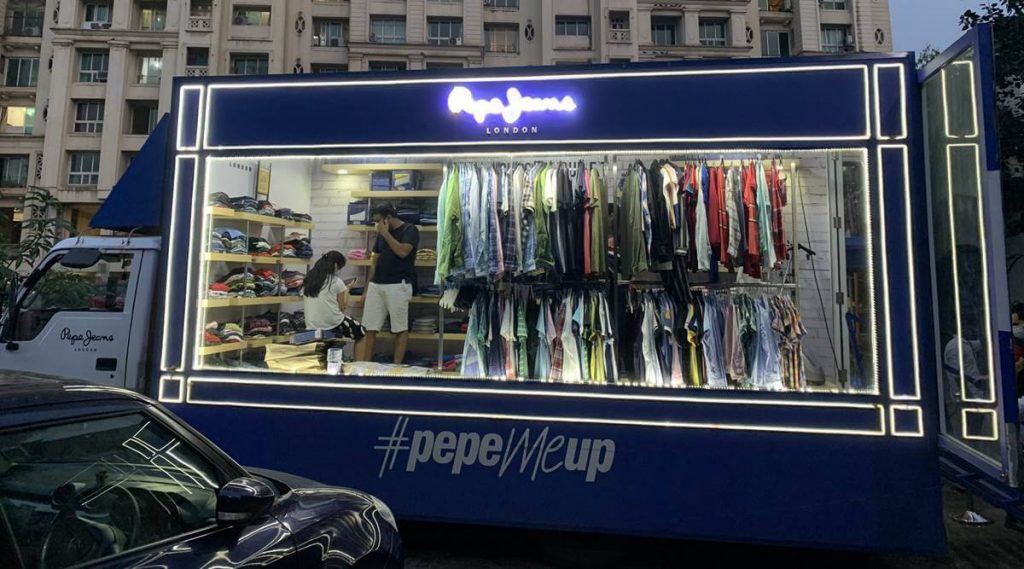
Triage the brick-and-mortar estate
As the COVID-19 pandemic has been around for, unfortunately, more than 12 months, it’s high time retail firms made long-term plans to respond to the crisis. Most firms right now are only in the early stages of their response. There have been some temporary actions from brick-and-mortar retail like banning unnecessary traveling, canceling large-scale events, and implementing quarantine. This is critical and effective, but only scratches the surface. What they need to do right now is to quickly come up with various scenarios of how COVID-19 could impact their customers, their suppliers, and, of course, their own operations.
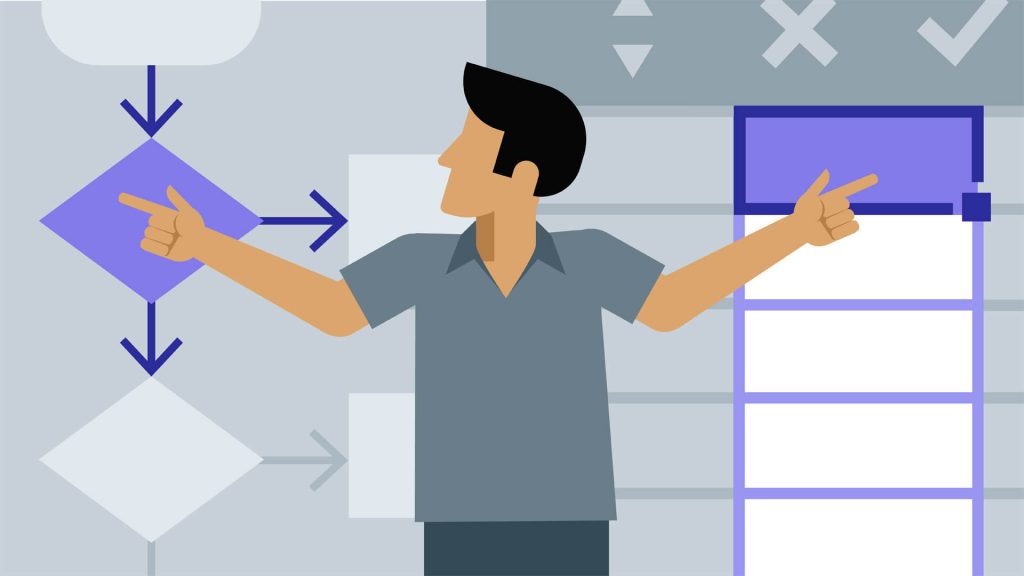
As the scenarios play out, the pandemic will affect each brick-and-mortar store depending on the local demand and the degrees of local competition. Thus, it’s vital for retailers to forecast the potential demand for each of their stores under all the different scenarios that might happen. Accordingly, they can come up with relevant plans. A ‘triage’ approach might be helpful in this situation particularly. This approach is based on an assessment of the sustainability of store locations. While assessing, brick-and-mortar retailers need to take into consideration the following factors:
- The change of local demand at each store, which reflects the competitive environment and local events.
- The capability of providing a full or partial service in each store based on how many staff members are available.
- The ease of supplying for each store, depending on their specific location, and the ability of the local logistics and supply chain.
With that, brick-and-mortar retail can come up with strategic plans to actively respond to COVID-19 to fruitfully operate their business while ensuring COVID-19 prevention.
Double down on click-and-collect
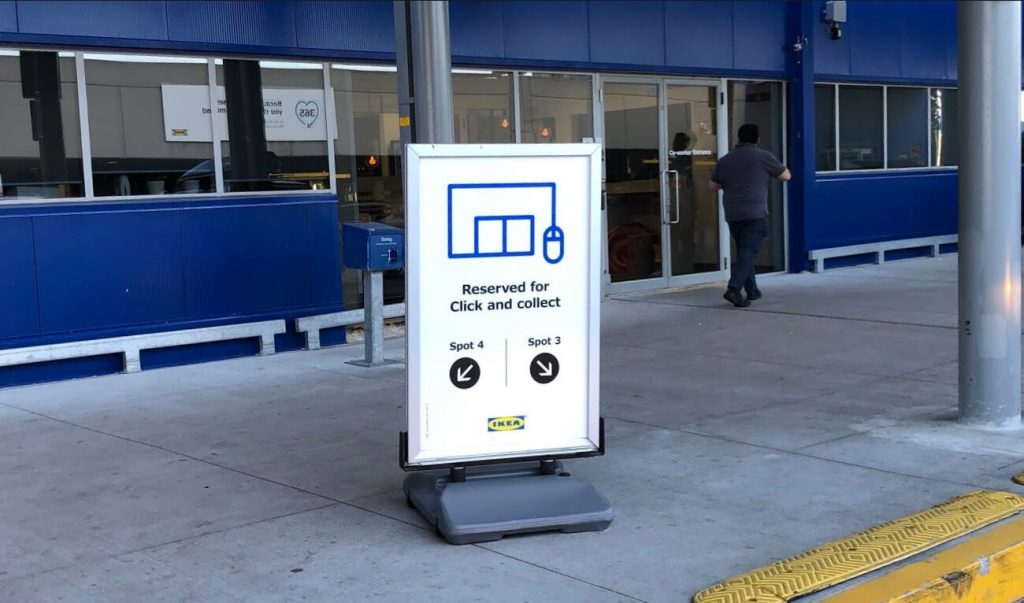
One of the most effective steps a retailer can take amid the COVID-10 pandemic is to offer diverse order fulfillment options. As brick-and-mortar stores are closing down because of either social distancing or customers being cautious with direct human interaction and avoiding staying outside for too long. That’s when retailers have realized the importance of click-and-collect.
Click-and-collect, or buy online, pick-up in-store (BOPIS) allows customers to browse freely on the online platform, hit the ‘buy now’ button, pay for their purchase online, and pick-up their order themselves in-store. The mutual benefits of this order fulfillment option are undeniable.
From the customers’ perspective, it fulfills the gratification of walking out of the store with a purchase, while still allowing them to shop online. Additionally, buyers can save time wandering around in the store, especially when the COVID-19 pandemic is putting contact at the risk of spreading the Coronavirus.
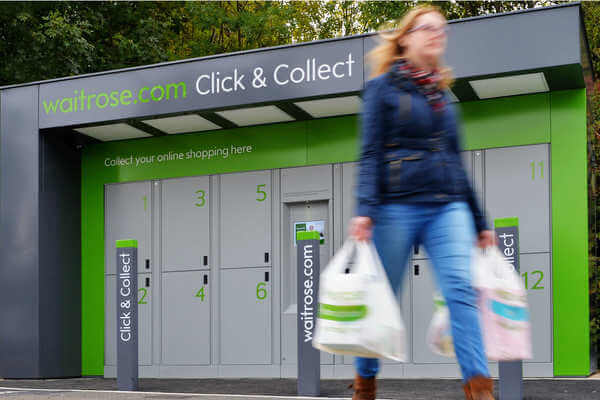
On the seller side, firstly, click-and-collect is more cost-effective than home delivery. The reason is that retailers can save on fuel, vehicle maintenance, and drivers’ time as there are much fewer delivery locations. In addition to that, physical retail is able to offer customers a wider range of pick-up locations without additional investment in more brick-and-mortar sites. Moreover, research has shown that 87% of shoppers tend to search for products online before purchasing. Thus, click-and-collect facilitates a smooth transition between exploring and buying by allowing purchases to happen at the very moment customers are exposed to the product. As a result, it increases sales performance. Lastly, click-and-collect can increase physical sales even more. It’s because 35% of shoppers who pick up an online order in a shop versus kerbside will buy something else.
With all of that being said, click-and-collect has win-win benefits and helps brick-and-mortar stores ensure COVID-19 prevention while maintaining their retail business.
Wrapping it up
The pandemic is ongoing. While it’s necessary for brick-and-mortar retailers to take actions for COVID-19 prevention, they also need space to manage through this particularly hard time. Hope that with the 5 ways how physical retailers can respond to COVID-19 prevention efficiently, business owners and operators like you can figure out the way to not only survive but also thrive in 2021. To wrap it up, the 5 key steps that brick-and-mortar stores can take amid the crisis are:
1. Ensure physical distancing
- Maintain an appropriate in-store customer number
- Make space for queuing
- Improve security
2. Ramp up your hygiene policies
- Make necessary in-store adjustments
- Encourage frequent handwashing
3. Be mobile and creative
4. Triage the brick-and-mortar estate
5. Double down on click-and-collect

